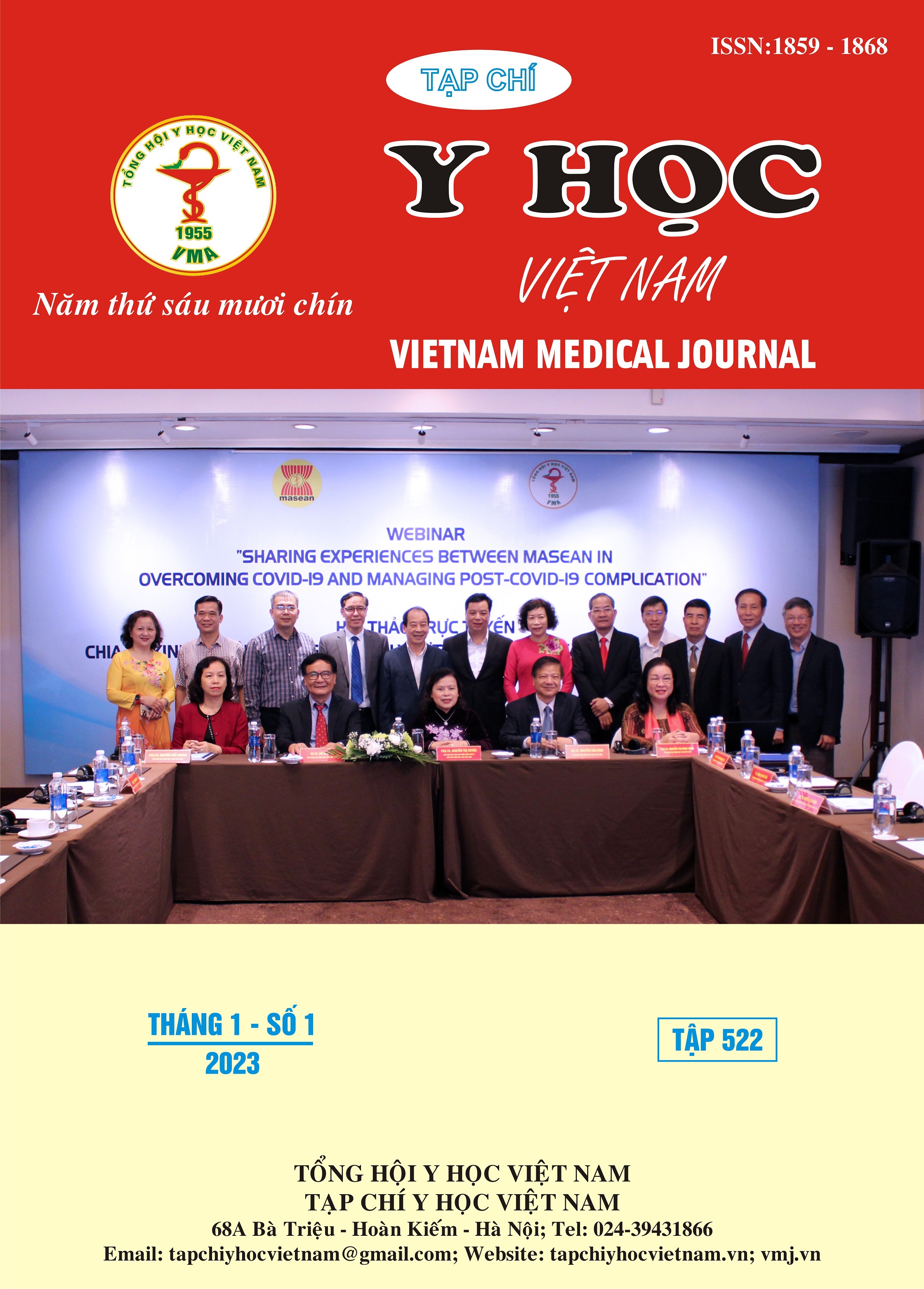ĐẶC ĐIỂM KHÁNG KHÁNG SINH CỦA VI KHUẨN ESCHERICHIA COLI MANG GEN MCR-1 PHÂN LẬP TRÊN NGƯỜI KHỎE MẠNH TẠI THÁI BÌNH
Nội dung chính của bài viết
Tóm tắt
Nghiên cứu được thực hiện nhằm phát hiện vi khuẩn Escherichia coli mang gen mcr-1 trong mẫu phân của người khỏe mạnh tại Thái Bình và phân tích đặc điểm kháng kháng sinh của các chủng vi khuẩn đã phân lập được. Nghiên cứu đã thu thập 612 mẫu phân người khỏe mạnh tại xã Nguyên Xá, Vũ Thư, Thái Bình trong thời gian từ 2013 đến 2016. Các mẫu phân được nuôi cấy trên môi trường MacConkey có bổ sung cefotaxime 1 mg/L. Với mỗi mẫu nuôi cấy, tiến hành phân lập 1 khuẩn lạc có kiểu hình là E. coli, định danh vi khuẩn bằng phương pháp sinh vật hóa học, đánh giá độ nhạy cảm kháng sinh với 14 loại kháng sinh và xác định nồng độ ức chế tối thiểu (MIC) với colistin theo hướng dẫn của CLSI. Gen kháng colistin mcr-1 của các chủng vi khuẩn được xác định bằng kỹ thuật Real-time PCR. Kết quả nghiên cứu cho thấy tỷ lệ vi khuẩn E. coli mang gen mcr-1 là 5,1%. Kết quả kháng sinh đồ cho thấy: 100% các chủng E. coli mang gen mcr-1 là các chủng kháng đa thuốc, trong đó có 96,8% không nhạy cảm với từ 5 đến 8 nhóm kháng sinh. Các kháng sinh thông dụng bị kháng với tỷ lệ cao từ 51,6 đến 100%, chỉ có cefoxitin, fosfomycin, ceftazidime và meropenem là có tỷ lệ kháng dưới 10%. Tất cả (100%) các chủng này đều kháng với colistin (MIC ≥ 4 mg/L). Nghiên cứu cho thấy có sự lan truyền của vi khuẩn E. coli mang gen mcr-1 kháng đa thuốc trong quần thể người khỏe mạnh tại Thái Bình. Do đó cần thực hiện các biện pháp can thiệp phù hợp nhằm ngăn chặn sự lây lan của vi khuẩn kháng đa thuốc trong cộng đồng.
Chi tiết bài viết
Từ khóa
E. coli, kháng đa thuốc, kháng colistin, mcr-1.
Tài liệu tham khảo
2. Liu, X., Li, R., Zheng, Z., et al. (2017). Molecular Characterization of Escherichia coli Isolates Carrying mcr-1, fosA3, and Extended-Spectrum-β-Lactamase Genes from Food Samples in China. Antimicrobial agents and chemotherapy, 61(6), e00064-17. https://doi.org/ 10.1128/AAC.00064-17.
3. Liu, Y. Y., Wang, Y., Walsh, T. R., et al. (2016). Emergence of plasmid-mediated colistin resistance mechanism MCR-1 in animals and human beings in China: a microbiological and molecular biological study. The Lancet. Infectious diseases, 16(2), 161–168.
4. Magiorakos, A. P., Srinivasan, A., Carey, R. B., et al. (2012). Multidrug-resistant, extensively drug-resistant and pandrug-resistant bacteria: an international expert proposal for interim standard definitions for acquired resistance. Clinical microbiology and infection: the official publication of the European Society of Clinical Microbiology and Infectious Diseases, 18(3), 268–281.
5. Nakayama, T., Jinnai, M., Kawahara, R., et al. (2017). Frequent use of colistin-based drug treatment to eliminate extended-spectrum beta-lactamase-producing Escherichia coli in backyard chicken farms in Thai Binh Province, Vietnam. Tropical animal health and production, 49(1), 31–37.
6. Tijet, N., Faccone, D., Rapoport, M., et al. (2017). Molecular characteristics of mcr-1-carrying plasmids and new mcr-1 variant recovered from polyclonal clinical Escherichia coli from Argentina and Canada. PloS one, 12(7), e0180347. https://doi.org/10.1371/journal.pone.0180347.
7. Snesrud, E., He, S., Chandler, M., et al. (2016). A Model for Transposition of the Colistin Resistance Gene mcr-1 by ISApl1. Antimicrobial agents and chemotherapy, 60(11), 6973–6976.


